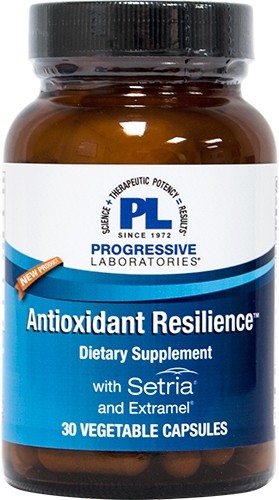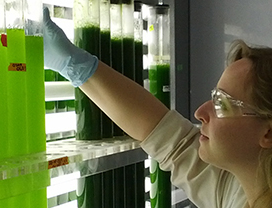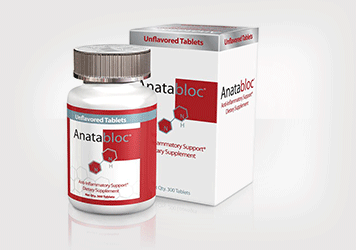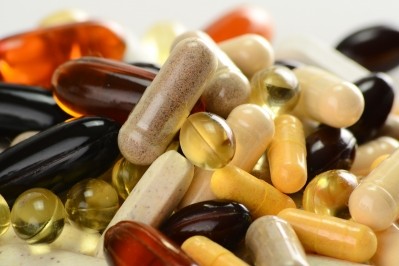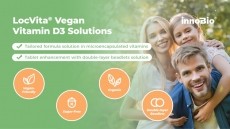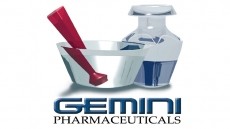Special edition: Antioxidants and carotenoids
Antioxidants and Pro-oxidants: Two Sides of the Same Sword

“There are multiple mechanisms of ‘antioxidant’ activity, from chelating reactive metals to quenching free radical reactions. As antioxidants have gained in popularity phenolic compounds have taken center stage. Phenolic antioxidants typically function through free radical reactions, by donation of electrons, or hydrogen atoms.
Many things can influence the oxidation state of these phenolics in solution including pH, chelation with metal ions and light among other things. In the analytical laboratory acidification and chelation of metal ions are of primary importance to prevent oxidation and 'degradation' of the compound during analysis.
For vitamin C a chemical reducer is commonly incorporated in the extraction solvent to ensure the redox equilibrium is shifted towards the reduced form, more on that later.
It is also important to note that oxidation and reduction reactions do not happen in isolation; there must be an oxidation and a reduction. A reducer (antioxidant) is a chemical that is oxidized itself in the reaction, thereby reducing the other chemical.
So antioxidants are prone to oxidation. Once they get oxidized many of them, the best of them, can redox cycle. In the case of phenolics, in particular catechols, they can move repeatedly from the reduced form to free radical and quinone forms and back again without degrading.
Metal ions are known to catalyze the oxidation of phenols and support redox cycling reactions. So redox active phenols are both reducers and oxidizers, depending on the redox state they are in and their environment.
For discussion, I generally lump the redox medicine world into two categories- oxidizers and reducers, or antioxidants and proxidants. In this overly-simplified world antioxidants protect and proxidants kill. Redox active phenols are used as antioxidants in a protective fashion while activated chemotherapy like molecules are used to treat diseases.
Vitamin C researchers for immune response that I have talked with all say you have to ‘incubate’ the vitamin c under physiological conditions (pH7.3, buffers with trace levels of transition metals) for 8 hours before starting the experiment to see any activity. As an analytical chemist I can tell you there is no reduced or antioxidant vitamin C left, it has all been oxidized.
Another example is the use of phenolics as antibiotics. They are measured in the QC lab in the reduced form, under protective acidic conditions. But then these phenolics are commonly administered as 'salts'. To make a salt you add a base to the phenol, often oxidizing it in the process.
This disconnect amounts to testing in the reduced ‘antioxidant’ state and then administering the drug in the oxidized form. It has been widely reported that antibiotics and chemotherapy generate oxidative stress, and it is my opinion that they act through oxidative stress and not antioxidant mechanisms.
Another example is the age old use of St. John’s Wort is as a topical antibiotic, not an antidepressant. The traditional antibiotic formulations required extraction and light exposure in the west, while in the east the Chinese were adding metals. Both accomplish the same end; oxidizing the naphthodianthrones (hypericins) prior to use. There are patents for using photo-activated hypericin for anti-viral treatments and cancer chemotherapy.
It is my opinion that St. John’s Wort products are contraindicated for cancer chemotherapy patients because it is also ‘activated’ during the treatment (cancer chemotherapy treatments are usually pro-oxidative), compounding the dose and complicating the treatment.
Because phenolic antioxidants can be either antioxidants or pro-oxidants I created the terms 'redox cycling' antioxidant and ‘terminal’ antioxidant. In free radical polymerization you have initiation, propagation and termination.
Quercetin is a catechol containing, redox cycling antioxidant that can donate an electron/hydrogen atom, and also potentially participate in on-going redox cycling reactions. I wonder if we shouldn’t give catechol containing redox cycling antioxidants to people that suffer from chronic oxidative stress or acute oxidative stress (chemotherapy).
In summary think it is important to get back to the basics of antioxidants, and that is redox chemistry. It appears that many biological processes are redox based, including the immune system and many intercellular signaling pathways.
Just because a molecule is a redox active phenol doesn’t mean it is an antioxidant, you have to consider the other half cell reaction and whether the phenol/radical/quinone will be a reducer or an oxidizer in that situation.
A whole new field of applied redox medicine could emerge if we study and use both edges of the redox sword.”
- Steven Baugh is the Technical Services Director of ChromaDex Analytics Inc, Boulder Colorado. Mr. Baugh has over 15 years of natural product analytical experience. Other positions include pharmaceutical Research Chemist, Industrial Hygienist, Technical Writer, Quality Assurance Officer and Manager of anISO17025 accredited analytical laboratory. Mr. Baugh received his B.S. in Chemistry with a minor in Physics from Eastern Kentucky University in Richmond, Kentucky and his Master of Science in Chemistry from Colorado School of Mines in Golden, Colorado. Steve has published and presented on a wide variety of topics from quality assurance to analytical methodology, and has two patents issued. For more background on antioxidants and proxidants please refer to his recent US patent applications numbered 20100021989 and 20090023804.
